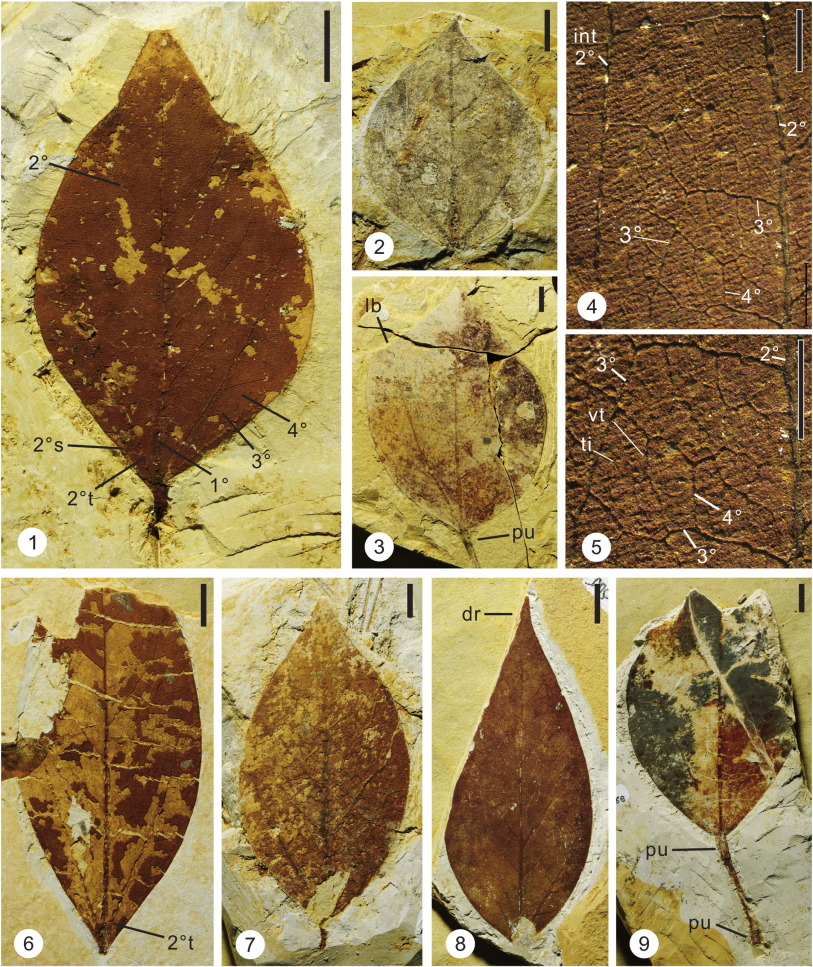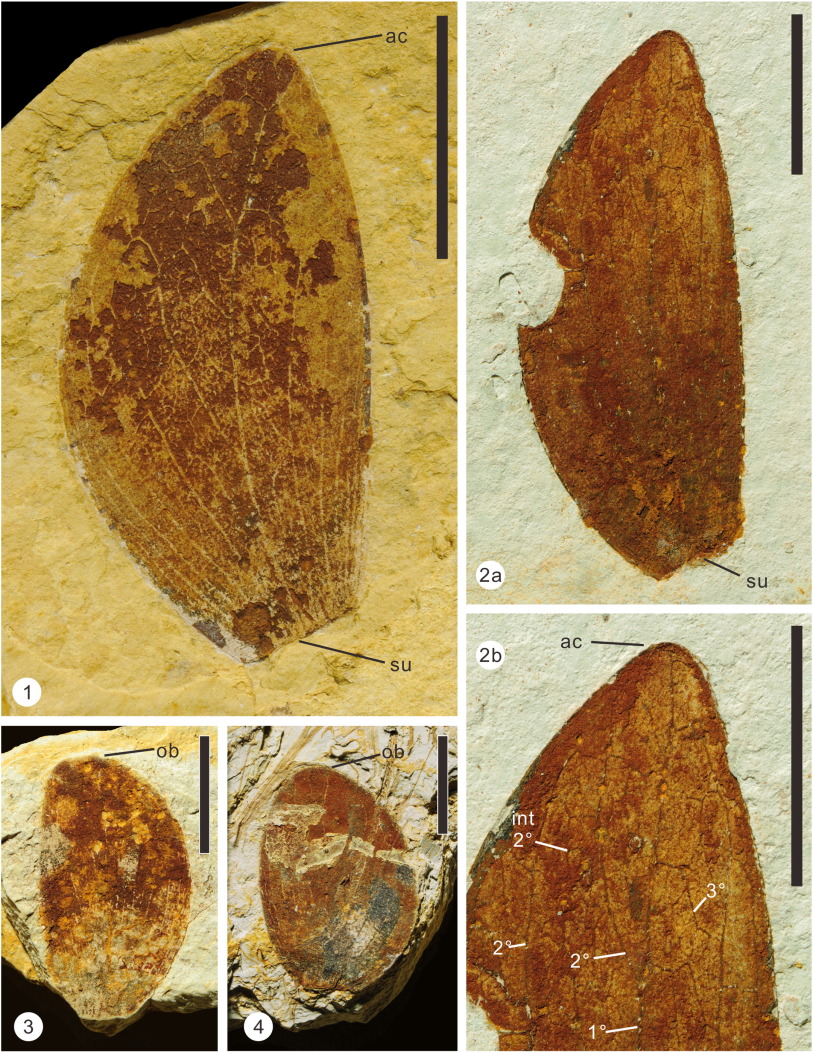Exbucklandia (Hamamelidaceae) consists of only 3 species. The significant difference in leaf morphology and distribution among the three species of Exbucklandia offers a unique opportunity to study regional distribution changes using fossil material. A fossil history of this genus will also help to reveal its large-scale biogeographical pattern.
Prof. ZHOU Zhekun and his team of Xishuangbanna Tropical Botanical Garden (XTBG) recently discovered lamina and stipule fossils of Exbucklandia in the early-middle Miocene (about 23.03 to 5.332 million years ago )strata in Wenshan, Yunnan, Southwestern China. These specimens represent a new fossil-species and the first stipule fossil record of Exbucklandia. Based on the extraordinary large Length:Width (L:W) ratio and the long drip-tip, they named the fossil species as Exbucklandia acutifolia J. Huang et Z. K. Zhou sp. Nov.
The leaf morphology of E. acutifolia is most closely-related to the modern species E. tonkinensis, a tree that is presently distributed in the Sino-Japan region of China. However, the fossil locality and other parts of Yunnan in the Sino-Japan region are currently predominantly populated with Sino-Himalaya E. populnea, indicating that the distribution boundary of Exbucklandia species has changed. The main trend has been Sino-Himalaya expansion and Sino-Japan recession.
Evidence from the fossil record indicates that the genus Exbucklandia was widespread in East Asia and North America during the Palaeogene.
The study entitled “Miocene Exbucklandia (Hamamelidaceae) from Yunnan, China: Revelation of its biogeography and palaeoecology” has been published online in Review of Palaeobotany and Palynology.
Contact
ZHOU Zhekun, Ph.D Principal Investigator
Key Laboratory of Tropical Forest Ecology, Xishuangbanna Tropical Botanical Garden, Chinese Academy of Sciences, Mengla, Yunnan 666303, China
Tel: 86-871-65109223
E-mail: zhouzk@xtbg.ac.cn

Leaf fossil of Exbucklandia acutifolia J. Huang et Z.K. Zhou sp. nov. (Image by HUANG Jian)

Stipule fossils of Exbucklandia sp. (Image by HUANG Jian)


